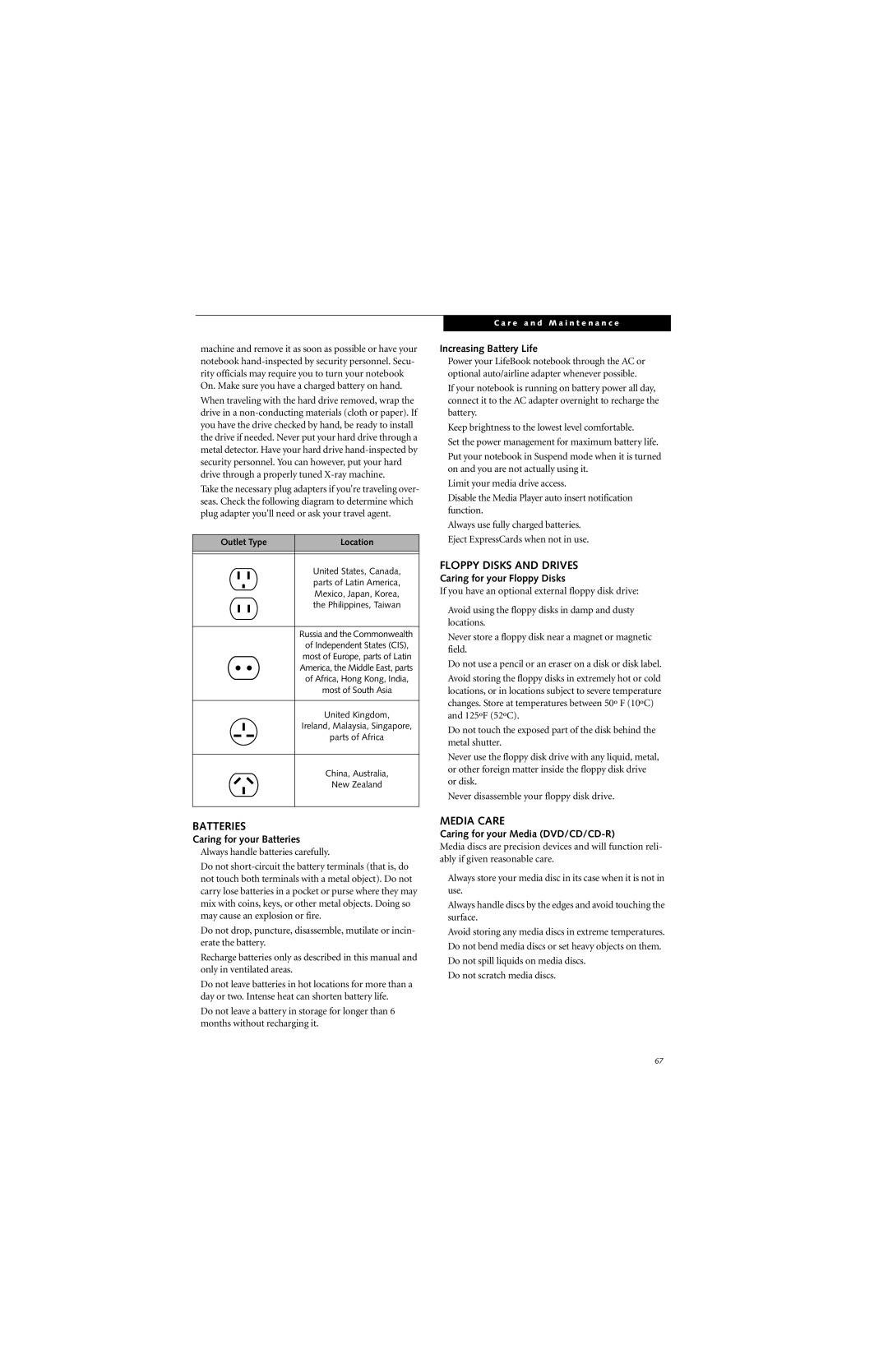
machine and remove it as soon as possible or have your notebook
■When traveling with the hard drive removed, wrap the drive in a
■Take the necessary plug adapters if you're traveling over- seas. Check the following diagram to determine which plug adapter you'll need or ask your travel agent.
Outlet Type | Location |
|
|
United States, Canada,
parts of Latin America,
Mexico, Japan, Korea,
the Philippines, Taiwan
Russia and the Commonwealth of Independent States (CIS), most of Europe, parts of Latin America, the Middle East, parts of Africa, Hong Kong, India, most of South Asia
United Kingdom,
Ireland, Malaysia, Singapore,
parts of Africa
China, Australia,
New Zealand
C a r e a n d M a i n t e n a n c e
Increasing Battery Life
■Power your LifeBook notebook through the AC or optional auto/airline adapter whenever possible.
■If your notebook is running on battery power all day, connect it to the AC adapter overnight to recharge the battery.
■Keep brightness to the lowest level comfortable.
■Set the power management for maximum battery life.
■Put your notebook in Suspend mode when it is turned on and you are not actually using it.
■Limit your media drive access.
■Disable the Media Player auto insert notification function.
■Always use fully charged batteries.
■Eject ExpressCards when not in use.
FLOPPY DISKS AND DRIVES
Caring for your Floppy Disks
If you have an optional external floppy disk drive:
■Avoid using the floppy disks in damp and dusty locations.
■Never store a floppy disk near a magnet or magnetic field.
■Do not use a pencil or an eraser on a disk or disk label.
■Avoid storing the floppy disks in extremely hot or cold locations, or in locations subject to severe temperature changes. Store at temperatures between 50º F (10ºC) and 125ºF (52ºC).
■Do not touch the exposed part of the disk behind the metal shutter.
■Never use the floppy disk drive with any liquid, metal, or other foreign matter inside the floppy disk drive or disk.
■Never disassemble your floppy disk drive.
BATTERIES
Caring for your Batteries
■Always handle batteries carefully.
■Do not
■Do not drop, puncture, disassemble, mutilate or incin- erate the battery.
■Recharge batteries only as described in this manual and only in ventilated areas.
■Do not leave batteries in hot locations for more than a day or two. Intense heat can shorten battery life.
■Do not leave a battery in storage for longer than 6 months without recharging it.
MEDIA CARE
Caring for your Media (DVD/CD/CD-R)
Media discs are precision devices and will function reli- ably if given reasonable care.
■Always store your media disc in its case when it is not in use.
■Always handle discs by the edges and avoid touching the surface.
■Avoid storing any media discs in extreme temperatures.
■Do not bend media discs or set heavy objects on them.
■Do not spill liquids on media discs.
■Do not scratch media discs.
67
